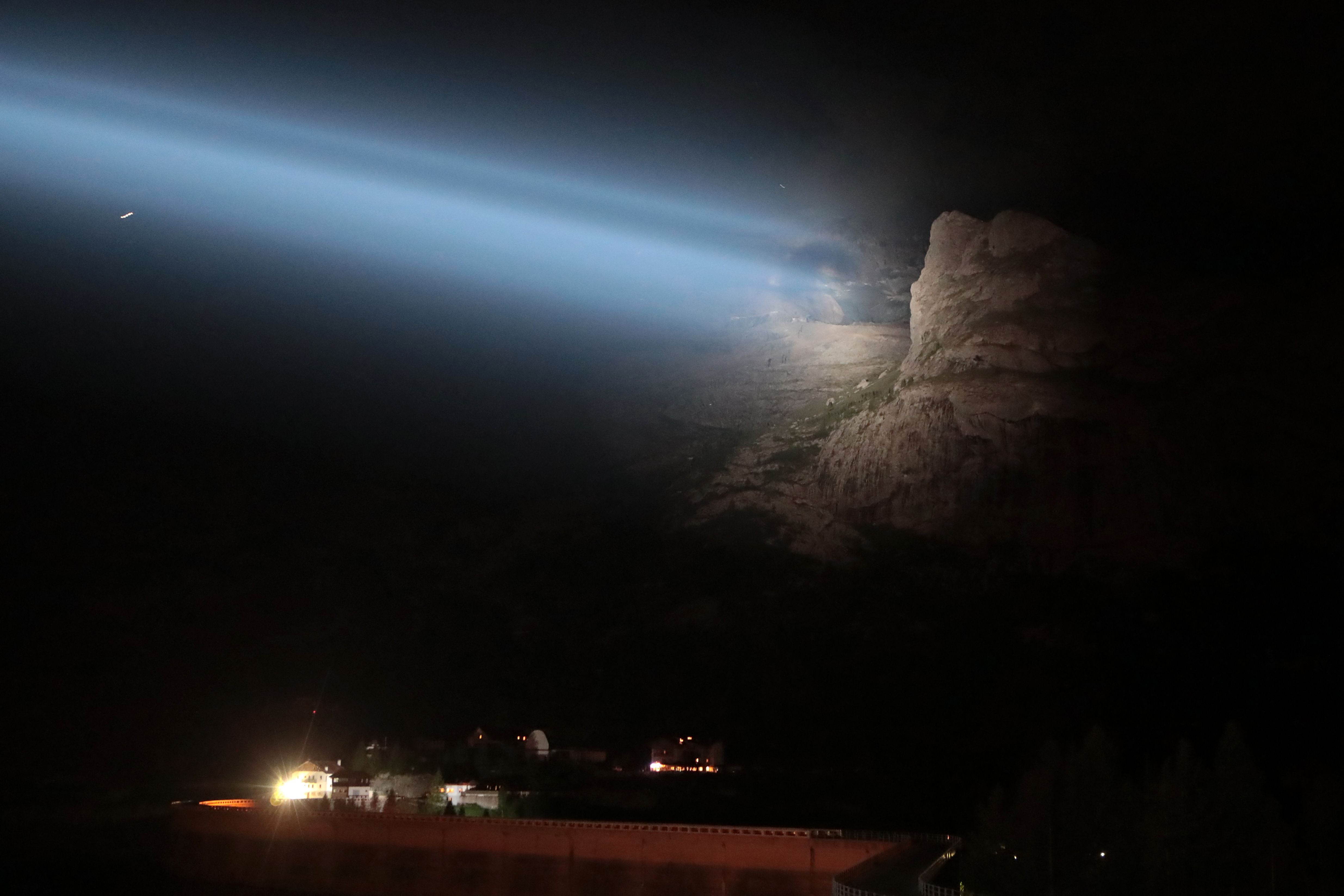At least six dead after huge chunk of glacier breaks off Italian mountain amid record temperatures
Rescuers searching for survivors after ‘ice avalanche’ slams into popular hiking trial
At least six people have died and eight have been injured after a large chunk of an Alpine glacier broke and roared down a mountainside in Italy.
Around 10 people were reported to be missing after the cascading ice, snow and rock slammed into hikers on a popular trail in the Dolomites on Sunday afternoon.
Rescuers were searching for survivors but Trento provincial government warned it expected a “heavy toll” after the large “ice avalanche,” which came amid record temperatures.
The glacier, in the Marmolada range, is the largest in the Dolomites in northeastern Italy and is used as a ski slope in winter, but its ice has been rapidly melting away in recent years.
Officials on Sunday night were still working to determine how many hikers were in the area when the ice avalanche struck, said Walter Milan, a spokesperson for the national Alpine rescue corps who provided the death and injury toll.
Rescuers were checking license plates in the parking lot as part of checks to determine how many people might be unaccounted for, a process that could take hours, he told the Associated Press.
"We saw dead [people] and enormous chunks of ice, rock," exhausted-looking rescuer Luigi Felicetti told Italian state TV.

Nationalities or ages of the dead were not immediately available, Mr Milan said. Of the eight hospitalised survivors, two were in grave condition, authorities said.
The injured were flown to several hospitals in the regions of Trentino-Alto Adige and Veneto, according to rescue services.
The fast-moving avalanche "came down with a roar the could be heard at great distance," local online media site ildolomiti.it said.
Earlier, the National Alpine and Cave Rescue Corps tweeted that the search of the involved area of the Marmolada peak involved at least five helicopters and rescue dogs.
Temporarily, the search for any more victims or missing was halted while rescuers evaluate the risk that more of the glacier could break off, Walter Cainelli, after conducting a rescue mission with a search dog, told state television.
Rescuers said blocks of ice were continuing to tumble down. In early evening, a light rain began to fall.
The SUEM dispatch service, which is based in the nearby Veneto region, said 18 people who were above the area where the ice struck would be evacuated by the Alpine rescue corps.
But Mr Milan said some on the slope might be able to get down by themselves, including by using the peak's cable car.
SUEM said the avalanche consisted of a "pouring down of snow, ice and rock." The detached section is know as a serac, or pinnacle of ice.
Marmolada, towering about 3,300 metres (about 11,00ft), is the highest peak in the eastern Dolomites, offering spectacular views of other Alpine peaks.
The Alpine rescue service said in a tweet that the segment broke off near Punta Rocca, or Rock Point, "along the itinerary normally used to reach the peak."

It was not immediately clear what caused the section of ice to break away and rush down the peak's slope. But authorities said the intense heatwave gripping Italy since late June was likely to be a factor.
"The temperatures of these days clearly had influence" on the glacier's partial collapse, Maurizio Fugatti, the president of Trento province, told Sky TG24 news.
Experts at Italy’s state-run CNR research centre, which has a polar sciences institute, have predicted the glacier will not exist within three decades as it is melted away by rising temperatures. The Mediterranean basin, shared by southern Europe, the Middle East and northern Africa, has been identified by UN experts as a “climate change hot spot,” likely to suffer heat waves and water shortages, among other consequences.
But Mr Milan stressed that high heat, which soared unusually above 10C on Marmolada's peak in recent days, was only one possible factor in Sunday's tragedy.
"There are so many factors that could be involved," he added. Avalanches in general are not predictable, he said, and heat's influence on a glacier "is even more impossible to predict."
In separate comments to Italian state television, Mr Milan called the recent temperatures "extreme heat" for the peak. "Clearly it's something abnormal."
Additional reporting by agencies
Join our commenting forum
Join thought-provoking conversations, follow other Independent readers and see their replies
Comments
Bookmark popover
Removed from bookmarks